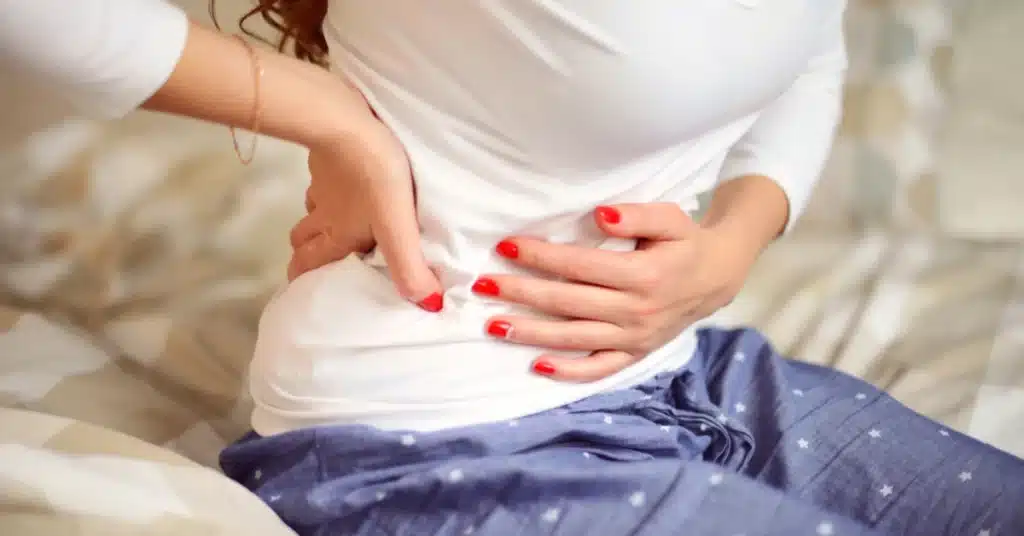Do Fibroids Cause Pain? Your Guide to Different Fibroid Pains
Fibroid pain is the discomfort felt from non-cancerous growths in the uterus called Fibroids.
The National Institutes of Health’s statistics show that 20-40% of women develop Fibroids by age 40.
Additionally, 70% of Caucasian women and 80% of African American women experience Fibroids by age 50.
Despite being non-cancerous, Fibroids can cause painful and life-interrupting symptoms in many women.
This article deals with the meaning and types of Fibroid pain along with answering the question do Fibroids cause pain.
What are Fibroids
Non-cancerous growths in the uterus are called Uterine Fibroids.
They can develop during a woman’s childbearing years.
The specific reason for Fibroids isn’t known, but they’re thought to be connected to the hormone Estrogen.
Do Uterine Fibroids cause pain
Fibroids can indeed cause pain in some individuals.
The pain can change based on intensity and location, by the size and location of the Fibroids within the uterus.
The severity of the pain can also be influenced by individual pain tolerance.
Fibroids can cause mild to severe pain, making it difficult to do daily tasks and affecting your quality of life.
Some individuals may experience chronic pelvic pain, while others may have intermittent episodes of acute pain.
Fibroids pain locations
Uterine Fibroids can cause various types of pain, each with its own intensity and way of affecting you.
Some of the most common types of pain are as follows:
Pelvic discomfort

Pelvic pain, a common symptom of Uterine Fibroids noted by Johns Hopkins, often accompanies dull pressure in the pelvic area.
Uterine Fibroids can sometimes extend to other organs, causing pain in areas like the lower back, legs, hips, and abdominal organs.
When Fibroids occupy space meant for the uterus or other organs, they can lead to general discomfort and pressure on nearby organs and tissues, contributing to pelvic pain.
Although rare, acute pain may arise if a Fibroid grows too large or significantly disrupts organ function.
Lower backache
According to Johns Hopkins Medicine, larger Fibroids in specific locations might result in lower back and leg discomfort.
This occurs because as Fibroids enlarge, they may compress spinal nerves, leading to pain in these areas.
Abdominal pressure
Feeling your belly is full or tight is a common sign when you have big or many Fibroids.
Emergency treatment for Fibroids is uncommon but may be needed.
Seek urgent medical care if you have sudden, severe belly pain unrelieved by pain medication.
Painful intercourse
Fibroids might make sex painful and increase period discomfort, feeling like stronger menstrual cramps.
Fibroids, especially submucosal and intramural ones, can change the uterus’s shape, causing pain during sex and potential bleeding near the cervix.
They can also affect hormone levels, lowering sex drive and making intercourse less enjoyable.
If you suddenly feel pain or bleeding during sex, it’s important to see a doctor promptly, especially if you’ve never had these issues before.
Pressure in the rectal and bladder areas
Depending on where they are, Fibroids can press on your bladder and rectum, causing discomfort.
Because of this, you might pee a lot or feel like you can’t empty your bladder properly.
You might also have trouble pooping, like feeling constipated or straining too much.
Feeling like your bladder is smaller can make you pee more often and may lead to urine leaks.
In severe cases, it can block your bladder and cause infections or blood in your urine.
If a Fibroid is near your colon, it can also block normal pooping and make it painful to poop.
Fibroids leg pain
Leg pain caused by Fibroids is not a common symptom but can occur depending on the location and size of the Fibroids.
In rare cases, Fibroids can press on nerves or muscles, leading to discomfort in one or both legs.
Treatment for Fibroid leg pain typically involves addressing the Fibroids themselves through methods like uterine Fibroid embolization for long-term relief.
Breast Fibroids pain

Breast Fibroid pain, often associated with fibrocystic breast changes, can manifest as tenderness, lumps, or discomfort in the breasts.
This condition, characterized by lumpy breast tissue and cysts, can cause symptoms like swelling, heaviness, and pain that may fluctuate with the menstrual cycle.
Management options for fibrocystic breast changes include wearing supportive bras, using pain relievers, avoiding caffeine, and considering hormonal therapy if necessary
Conclusion
In conclusion, Fibroids can cause a range of painful symptoms that can significantly impact a woman’s quality of life.
While the exact cause of Fibroids is unknown, they are thought to be connected to the hormone Estrogen.
Fibroids are noncancerous growths that can develop during a woman’s childbearing years, and they are prevalent among women of all races and ethnicities.
The types of Fibroid pain can vary in intensity and location, and they can be influenced by individual pain tolerance.
Some women may experience chronic pelvic pain, while others may have intermittent episodes of acute pain.
Fibroids can cause mild to severe pain, making it difficult to do daily tasks and affecting overall quality of life.
By understanding the link between Fibroids and pain, women can recognize the signs and seek appropriate medical care to manage their symptoms.
With proper treatment, women can improve their quality of life and reduce the impact of Fibroid-related pain.
Frequently Asked Questions
Can Fibroids cause back pain?
Fibroids can cause back pain, with over 60% of women experiencing this symptom. The location of the Fibroid can influence the type of pain felt, such as Fibroids on the outer surface of the uterus leading to back and leg pain.
Can Fibroids cause pain during sex?
Yes, Fibroids can cause pain during sex. The discomfort experienced during intercourse is often related to the size and location of the Fibroid within or on the uterus. Larger Fibroids can exert pressure, leading to painful intercourse for some women.
Can Fibroids be painful?
Yes, Fibroids can cause pain in some individuals. The pain can vary in intensity and location, depending upon the size and location of the Fibroids within the uterus. Fibroids can cause mild to severe pain, making it difficult to do daily tasks and affecting one’s quality of life.
How can I get my Fibroids to stop hurting?
Treatment options for Fibroids range from medication to minimize symptoms to surgery and may include endometrial ablation, laparoscopic myolysis, myomectomy, or hysterectomy. The patient’s age and general health, together with the location, size, and severity of the Fibroids, all influence the therapy option.
WowRx uses only high-quality sources while writing our articles. Please read our content information policy to know more about how we keep our content reliable and trustworthy.






